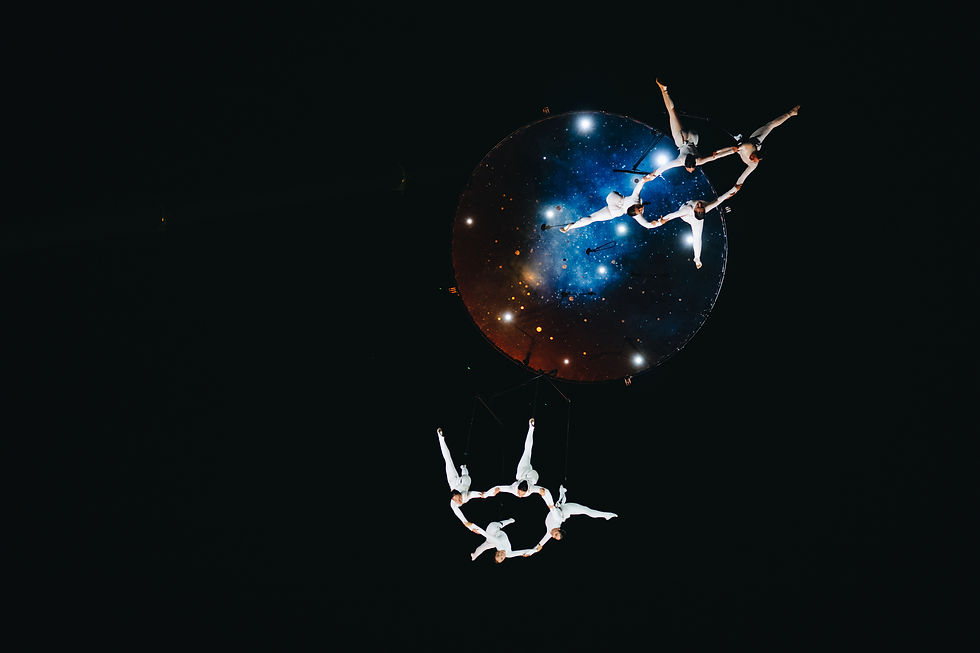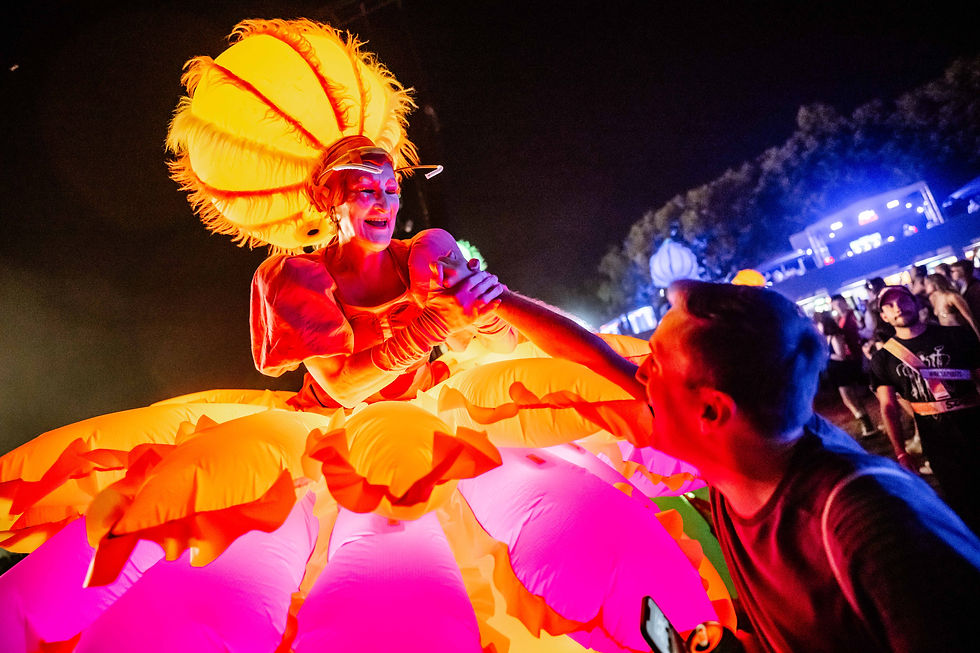Sziget 2025: Art Beyond the Stage
- Anna Lilli Garai
- Aug 19
- 3 min read
When people talk about Sziget, the conversation almost always begins with the music. Six days, dozens of stages, world-class headliners: the numbers alone are staggering. But anyone who has walked the island knows there’s another story unfolding in the shade of the trees, in the corners between stages, and in the unexpected hush of an art performance breaking through the noise. Sziget has always sold itself as a “festival of freedom,” but in recent years it has grown into something more layered: a cultural laboratory where art expands beyond the stage, spilling into daily life and reshaping the way we think about festivals altogether.
Wandering through this year’s festival, it struck me that Sziget isn’t just presenting art—it is living inside it. Walking down the paths between tents and stages, you pass by installations that feel less like decoration and more like interventions. A giant sculptural form rises like a sentinel over the crowd, a reminder that here, even the landscape is designed to spark curiosity. Interactive pieces invite you to touch, climb, and question. One moment you’re dancing in front of a main stage, the next you’re painting your own contribution to a collective mural that will vanish at the week’s end, like a ritual only those present will ever know.

The beauty of it is in the unexpected. At Cirque du Sziget, performers bend their bodies into impossible shapes, reminding you that art is not confined to walls or frames but is made of muscle, breath, and risk. It’s here that I overheard a Dutch festivalgoer pause, wide-eyed between acrobatic sets:
“I came for the music, but I’m staying for the moments I never expected.”
It’s a simple observation, but it captures the essence of Sziget—art woven into experience so seamlessly that it sneaks up on you, reshaping what you thought you came for.

Beyond circus, the festival sprawls into entire villages of creativity: a theatre stage where actors play to an audience lounging barefoot in the grass; a museum quarter that doesn’t simply exhibit but provokes, its curators treating the festival as a temporary city with its own cultural pulse; workshops where strangers sit cross-legged on the floor, suddenly absorbed in painting, clay, or movement exercises they hadn’t imagined themselves trying hours before. Each corner offers an invitation not just to watch, but to step in and participate.


Sziget’s art program has always been ambitious, but what makes it truly remarkable is the way it reframes the act of being together. In a world where festivals can easily dissolve into mass spectacle, here the emphasis is on intimacy within scale. Art provides the counterbalance: a space to reflect, to create, to encounter. The installations are not just background; they act as connective tissue, pulling thousands of individuals into fleeting collectives that dissolve as quickly as they form.
That transience is part of the point. Unlike a museum, where artworks are preserved and catalogued, Sziget thrives on impermanence. Pieces vanish when the festival ends, performances exist only in memory, collaborations begin and end in a single week. It reminds us that art doesn’t always have to be permanent to matter. Sometimes its value lies precisely in its ephemerality, in how it shapes a moment and then releases it.

Walking off the island, dust still clinging to your shoes, you realize the week has not just been about concerts you’ll boast about or selfies you’ll scroll back to. It’s been about fragments of art—an installation glimpsed in passing, a workshop that unlocked a forgotten joy, a circus act that stunned you into silence, a stranger’s comment that reframed the whole experience. Together they form a mosaic that feels less like entertainment and more like living inside a work of art.
And maybe that’s what sets Sziget apart today: it’s not only one of Europe’s biggest music festivals, it’s also one of its most ambitious cultural experiments. A temporary city where art exists not beyond the stage but beneath your feet, in the air you breathe, in the collective imagination of everyone present.


